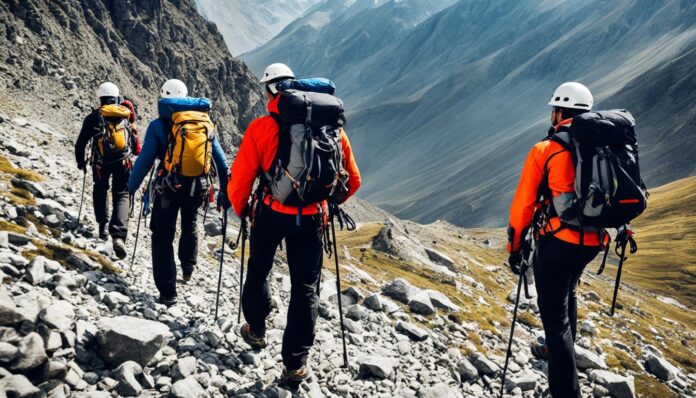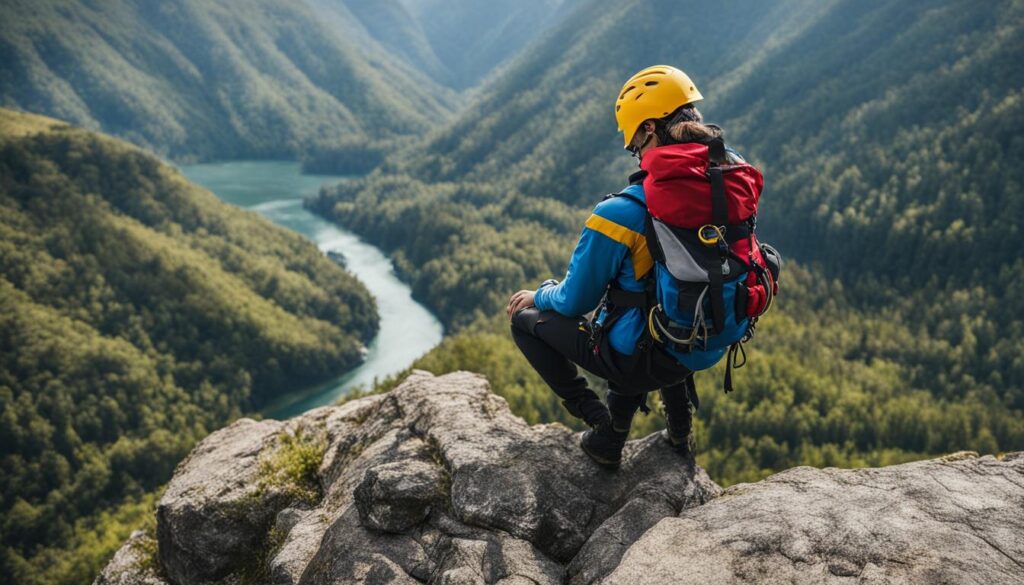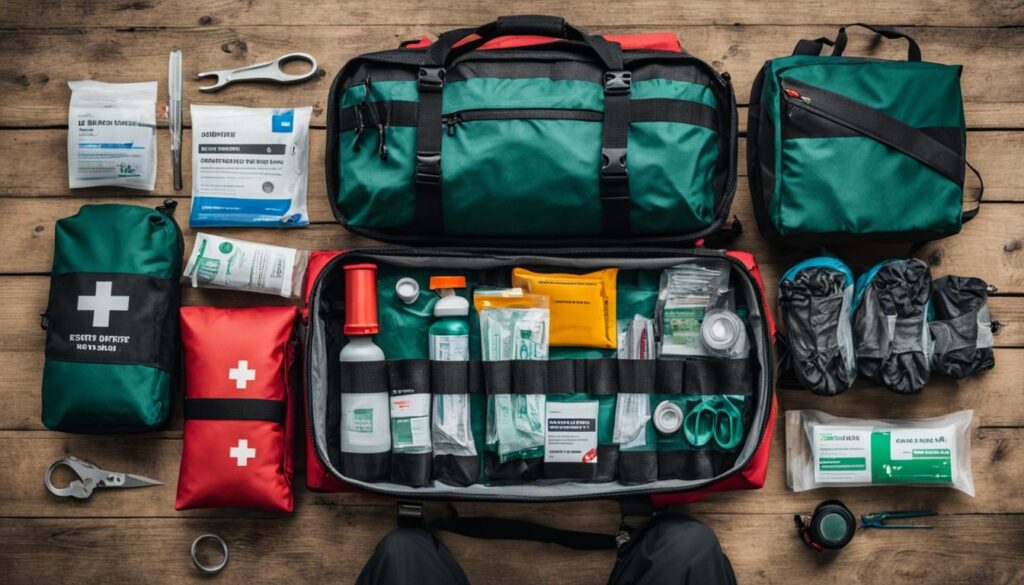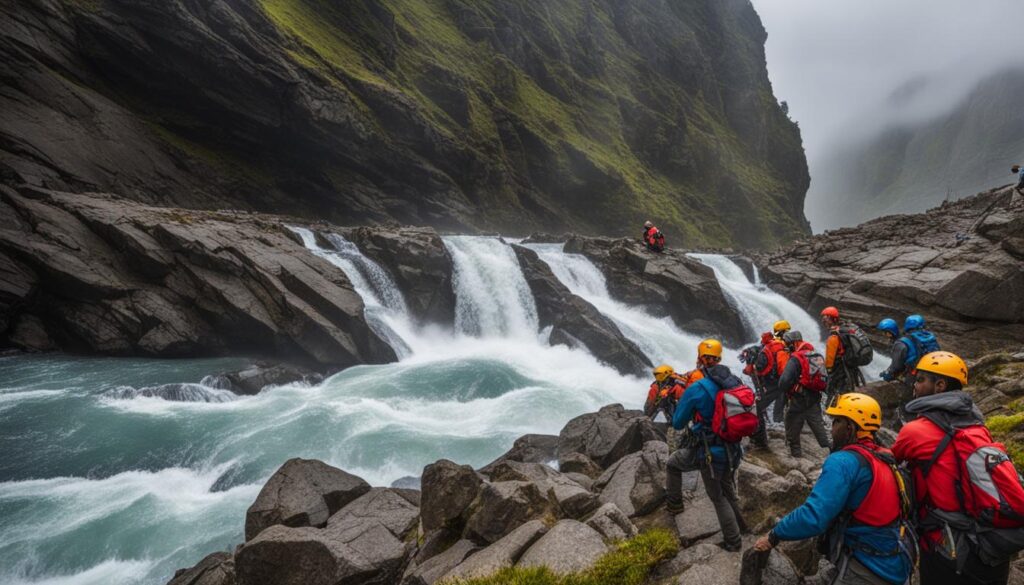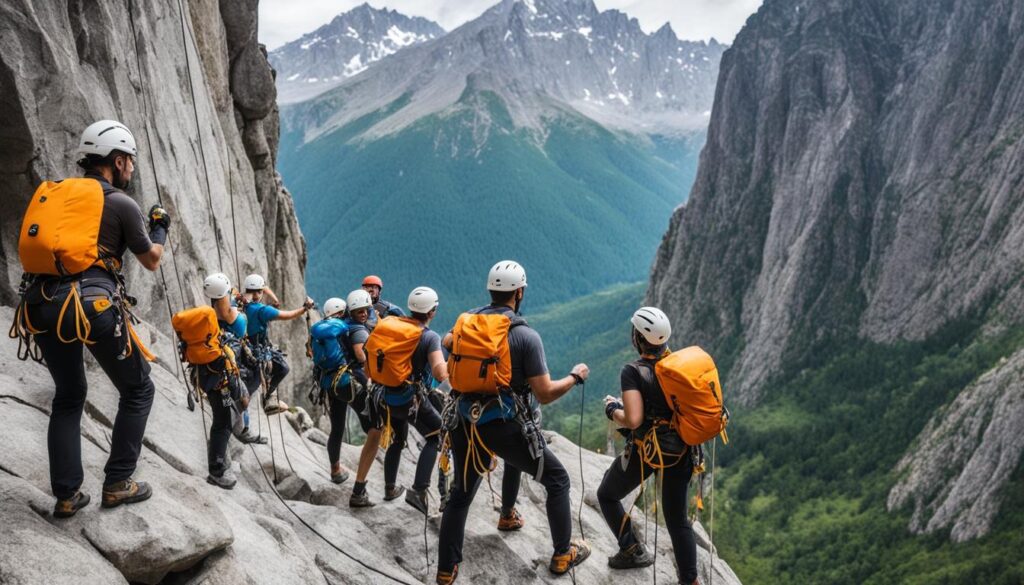You love adventure and the excitement that comes with it. Whether it’s hiking, rock climbing, or kayaking, you enjoy exploring new places and pushing your limits. But before you embark on your next adventure, it’s crucial to prioritize travel safety.
Adventure activities come with inherent risks, but taking precautions can minimize those risks and ensure a safe and enjoyable experience. This guide covers essential safety tips and guidelines to help you stay safe while engaging in adventure activities.
From understanding the risks associated with adventure activities to assessing your fitness and skill level, planning and preparation, and emergency preparedness, this guide has got you covered. Whether you’re a seasoned adventurer or a first-timer, these safety guidelines will help you minimize risks and enjoy your adventure to the fullest.
Understanding Adventure Activities and Risks
Engaging in adventure activities can be an exciting and exhilarating experience. However, it is important to remember that adventure activities come with inherent risks. Understanding these risks and being adequately prepared before embarking on your adventure is paramount for your safety. This section will provide an overview of different adventure activities and the associated risks, allowing you to better comprehend what to expect and how to prepare.
Risk Management in Adventure Travel
Risk management is an essential part of adventure travel safety. It is crucial to understand the various risks associated with a particular activity and assess your comfort level in dealing with those risks. Proper training, equipment, and preparation can reduce the likelihood of injury or mishap. The following table provides an indication of the level of risk associated with some common adventure activities:
| Adventure Activity | Level of Risk |
|---|---|
| Hiking | Low to Moderate |
| Rock Climbing | High |
| Whitewater rafting | Moderate to High |
| Skydiving | Extreme |
Adventure Activities
Adventure activities come in various forms and offer different levels of excitement and adrenaline rush. Some of the popular adventure activities include:
- Rock climbing and mountaineering
- Canyoneering
- Whitewater rafting and kayaking
- Paragliding and skydiving
- Bungee jumping and ziplining
- Caving and spelunking
Whether you are a novice or an experienced adventurer, it is vital to remain aware of the associated risks of your chosen activity. Always seek expert advice and training before attempting a new or unfamiliar activity. Stay within your limits and avoid dangerous behaviors, such as recklessness or alcohol consumption, to minimize the risk of injury.
Planning and Preparation for Adventure Travel
Before embarking on any adventure activity, proper planning and preparation are crucial for ensuring a safe and enjoyable experience. By taking the necessary precautions, you can minimize potential risks and maximize the adventure of a lifetime.
Researching Destinations
Researching your destination is the first step towards a safe adventure travel plan. Make sure to gather information about the local environment, culture, emergency services, and political climate. Check for travel advisories from the government and consult with local experts or guides to ensure that you have the most up-to-date information.
Selecting Reputable Tour Operators
Choosing a reputable tour operator is essential for a safe and enjoyable adventure trip. Make sure to research their background, reviews and references, years of experience, and compliance with safety regulations. Ask questions and consider their equipment, expertise, and contingency plans.
Packing Essential Safety Gear
Packing essential safety gear is essential to stay safe during adventure activities. Make sure to pack suitable clothing and footwear, water bottles, sunglasses, sunscreen, first aid kit, and other necessary safety equipment for the activities you plan to undertake. Consider renting gear, especially if you are new to the activity.
| Adventure Activities | Essential Safety Gear |
|---|---|
| Hiking | Hiking boots, backpack, map/compass, headlamp, insect repellent |
| Rock Climbing | Climbing shoes, helmet, harness, ropes, carabiners |
| Water Sports | Life jacket, wetsuit, waterproof bag, whistle |
| Cycling | Cycle helmet, gloves, repair kit, air pump |
Remember, proper planning and preparation for adventure activities is essential for ensuring your safety and enjoyment. Sign up for comprehensive travel insurance that covers all potential risks, including medical emergencies, trip cancellations, and evacuation. With the right planning and preparation, you can enjoy a safe and unforgettable adventure.
Assessing Personal Fitness and Skill Level
When it comes to adventure travel safety, assessing your personal fitness and skill level is crucial. Engaging in activities that exceed your physical abilities can put you at risk of injury or worse. Therefore, it’s essential to evaluate your fitness level before participating in any adventure activity.
Being honest with yourself about your abilities and limitations will help you choose the appropriate activity that aligns with your fitness level. For example, if you’re a beginner, opting for a less intense activity will be a safer choice than diving into an extreme adventure.
If you’re unsure about your fitness level or lack the skills required for an adventure activity, it’s advisable to seek appropriate training and guidance before embarking on the trip. Many reputable tour operators offer introductory courses and training sessions to help you acquire the necessary skills and knowledge for the activity’s safe completion.
Moreover, some adventure activities require specific qualifications. For example, if you plan to scuba dive, obtaining a scuba diving certification will ensure you have the necessary skills and knowledge required to scuba dive safely.
What to Consider When Assessing Your Fitness and Skill Level
“Being honest with yourself about your abilities and limitations will help you choose the appropriate activity that aligns with your fitness level.”
There are several factors to consider when assessing your fitness and skill level for adventure activities.
| Factors | What to Consider |
|---|---|
| Age and physical health | Your age, overall physical health and existing medical conditions can impact your ability to engage in adventure activities. |
| Activity-specific skills | Some activities require specific skills, such as kayaking or rock climbing, which require knowledge of certain techniques. |
| Fitness level | Examine your endurance level, such as how long you can maintain physical activity before getting too tired, and your strength level, such as how much weight you can handle for a particular activity. |
| Level of experience | If you are inexperienced in a particular adventure activity, consider opting for a beginner’s level, rather than an intermediate or expert level. |
By assessing your personal fitness and skill level, you’ll be able to make informed decisions about the adventure activities you can safely engage in, and reduce the risk of accidents and injuries while traveling for adventure.
Understanding Environmental Factors and Hazards
When engaging in outdoor adventure activities, it is crucial to understand the potential environmental factors and hazards that may arise. By recognizing these risks, you can take appropriate safety measures and enjoy your adventure activities with confidence. Below are some important environmental factors and hazards to consider:
| Environmental Factors | Hazards |
|---|---|
| Weather conditions | Extreme temperatures, lightning strikes, hypothermia, dehydration. |
| Terrain challenges | Falls, slips, rockfall, avalanches, landslides. |
| Wildlife encounters | Animal attacks, insect bites, snake bites, allergic reactions. |
| Water hazards | Drowning, hypothermia, water-borne illnesses, strong currents. |
It is important to take safety measures to mitigate risks associated with these hazards. These can include:
- Ensuring you have appropriate clothing and gear for the weather and terrain you will encounter.
- Closely following instructions from guides or experienced group members.
- Carrying a well-stocked first aid kit that includes necessary medication and supplies.
- Being aware of your surroundings and avoiding behaviours that may attract wildlife.
By taking these precautions, you can stay safe during your outdoor adventure activities and minimize the risks associated with environmental factors and hazards. Remember that safety should always be your top priority.
Equipment Safety and Maintenance
When it comes to adventure travel safety, having reliable gear is crucial. Choosing suitable equipment and maintaining it in good condition can help prevent accidents and injuries during your adventures. Here are some safety guidelines to follow:
- Choose the right equipment: Ensure that your gear is appropriate for the activity you’re planning to undertake. Research the best options to suit your needs and invest in quality gear from reputable brands.
- Inspect your gear: Before each use, inspect your equipment to ensure that it is in good condition. Look out for any signs of wear and tear, such as frayed ropes or cracks in helmets.
- Maintain your gear: Regularly clean and maintain your equipment to ensure that it stays in good condition. Follow manufacturer instructions on maintenance and storage, and replace any damaged gear as soon as possible.
- Use protective gear: Wear protective gear that is appropriate for the activity you’re engaging in, such as helmets, kneepads, or life jackets. This can help prevent serious injuries in case of accidents.
- Carry a repair kit: If your adventure involves remote locations, carrying a small repair kit can come in handy in case of equipment failure. Include items such as duct tape, rope, and spare parts for your gear.
“Choosing suitable equipment and maintaining it in good condition can help prevent accidents and injuries during your adventures.”
Safety Guidelines During Adventure Activities
Engaging in adventure activities is an exciting way to explore new places and challenge yourself physically, but it’s crucial to prioritize safety while doing so. Follow these safety guidelines to ensure a fun and secure adventure:
- Stay within designated areas: Venture only in authorized areas and stick to marked paths to avoid potential hazards.
- Follow instructions from guides: Listen carefully to your guide’s instructions and follow them closely to ensure your safety.
- Maintain communication: Keep in touch with your group or guide at all times, and use proper equipment such as walkie-talkies or satellite phones if necessary.
- Be aware of your surroundings: Stay alert to potential dangers such as extreme weather conditions or wildlife, and take appropriate precautions.
Remember that safety should always come first when engaging in adventure activities. By following these guidelines, you can enjoy a thrilling adventure while minimizing risks.
Emergency Preparedness and First Aid
Adventure activities can be exhilarating, but they also come with potential risks. That’s why emergency preparedness and carrying a first aid kit are crucial for adventure travel safety. As you plan your next adventure, make sure to include packing a well-stocked first aid kit as part of your preparations.
Basic first aid techniques can make a significant difference in the event of an emergency. Some essential first aid skills to know include administering CPR, stopping bleeding, and treating shock. Familiarize yourself with these techniques before heading out on your adventure.
In addition to carrying a first aid kit, it’s essential to have a plan in place in case of an emergency. Make sure to communicate this plan with your travel companions, and be aware of the location and contact information for nearby medical facilities.
Remember, staying prepared and informed can help prevent potential emergencies and lessen the impact of an unexpected situation. Keep your adventure travel safety a top priority by being prepared for the unexpected.
Travel Insurance for Adventure Travel
Travel insurance designed specifically for adventure travel is essential to ensure your safety and peace of mind while on your journey. Adventures come with potential risks, and accidents can happen at any time. Having the right travel insurance coverage ensures that you’re protected from unforeseen circumstances that could potentially ruin your trip.
When selecting travel insurance for adventure travel, it’s important to consider the coverage options provided, including medical evacuations and trip cancellations. Medical evacuations are necessary when accidents or unforeseen incidents occur while traveling. Having this type of coverage ensures that you’re brought to the nearest medical facility in case of an emergency.
Remember, it’s always better to be safe than sorry.
Another important coverage is trip cancellation. It protects your investment in case your trip needs to be canceled due to specific reasons such as severe weather conditions, illness, or death of a family member.
Don’t forget to read and understand the policy carefully and ask any questions you may have before committing to a plan.
What to look for in Adventure Travel Insurance:
| Coverage | What it means for you |
|---|---|
| Medical Evacuation and transportation | If you are injured or become sick, you will be taken to the nearest hospital offering necessary medical care. If you need to be transported to a different medical facility, this coverage ensures that you are transported to an appropriate facility. |
| Trip Cancellation | Cancelling your trip due to unforeseen circumstances such as illness, job loss, or death in the family. |
| Lost, Stolen, or Damaged Gear | Coverage for essential gear such as hiking boots, backpacks, and cameras. |
| Adventure Activities Coverage | Coverage for specific activities such as rock climbing, mountaineering, and whitewater rafting. |
| 24/7 Emergency Assistance | If you experience an emergency or need assistance, this coverage provides a safety net to offer support and guidance. |
Conclusion
Now that you have read this guide, you understand the importance of travel safety when engaging in adventure activities. Remember to always prioritize safety and take necessary precautions when embarking on outdoor adventures. By assessing risks, planning and preparing ahead of time, and following safety guidelines, you can ensure a safe and enjoyable experience.
Don’t forget to research destinations, check travel advisories, select reputable tour operators, and pack essential safety gear. Assess your personal fitness and skill level before participating in adventure activities and understand the environmental factors and potential hazards associated with them. Ensure equipment safety and maintenance and follow specific safety guidelines during adventure activities. Carry a first aid kit and have travel insurance specifically designed for adventure travel to ensure peace of mind during your journey.
Adventure activities can be thrilling and memorable, but only if you prioritize your safety. With these safety tips and guidelines, you can embark on your next adventure with confidence and make unforgettable memories.




























